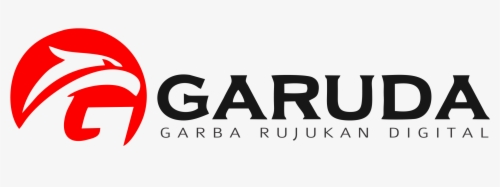Business Models Based on Technology for Startup
DOI:
https://doi.org/10.22219/jibe.v3i02.10168Keywords:
Startup, business modelAbstract
The many and existence of startups in Indonesia and the world continue to increase, along with the increasing use of technology and the internet. This encourages startups, newcomers to compete and survive to attract the attention of consumers. One of the determinants of startups' success is the business models, especially those related to technology. The use of the right business model will bring the impact of consumer or user trust on the startup. In this paper, the author presents a theoretical reviews related to some technology-based business models trends that can be used by a startup in starting his business as well as how to determine the right business model.
Downloads
References
Ahwarumi, B., & Sawarjuwono, T. (2017). Enhancing innovation roles of Pesantren business incubator in Pondok Pesantren Sunan Drajat. Journal of Innovation in Business and Economics, 1(02), 71–82.
Aldrich, H. E., & Ruef, M. (2018). Unicorns, gazelles, and other distractions on the way to understanding real entrepreneurship in the United States. Academy of Management Perspectives, 32(4), 458–472.
Bednár, I. R., & Tarišková, I. N. (2018). Indicators of startup failure. International Scientific Journal “Industry 4.0,” 5(December 2017), 238–240.
Blank, S., & Dorf, B. (2012). The startup owner’s manual: The step-by-step guide for building a great company. BookBaby.
Eka, R. (2016). Mengenal Valuasi Startup dan Istilah “Unicorn.”
Fahland, D., Favre, C., Jobstmann, B., Koehler, J., Lohmann, N., Völzer, H., & Wolf, K. (2009). Instantaneous soundness checking of industrial business process models. In International Conference on Business Process Management (pp. 278–293).
Graham, P. (2012). Startup = Growth.
Handani, S. W., Suyanto, M., & Sofyan, A. F. (2016). Penerapan konsep gamifikasi pada e-learning untuk pembelajaran animasi 3 dimensi. Telematika, 9(1).
Haws, K. L., & Bearden, W. O. (2006). Dynamic pricing and consumer fairness perceptions. Journal of Consumer Research, 33(3), 304–311.
Hulpke, J. F. (2019). No Individual Creativity, No Organizational Innovation. Journal of Innovation in Business and Economics, 3(01), 41–48. https://doi.org/10.22219/jibe.v3i01.5972
Jayaraman, V., & Baker, T. (2003). The Internet as an enabler for dynamic pricing of goods. IEEE Transactions on Engineering Management, 50(4), 470–477.
Kalyanasundaram, G. (2018). Why Do Startups Fail? A Case Study Based Empirical Analysis in Bangalore. Asian Journal of Innovation and Policy, 7(January), 79–102. https://doi.org/10.7545/ajip.2018.7.1.079
Kumar, V. (2014). Making “Freemium” Work. Retrieved December 30, 2019, from https://hbr.org/2014/05/making-freemium-work
Lindgardt, Z., Reeves, M., Stalk Jr, G., & Deimler, M. (2012). Business Model Innovation: When the game gets tough, change the game. Own the Future: 50 Ways to Win from The Boston Consulting Group, 291–298.
Liu, C. Z., Au, Y. A., & Choi, H. S. (2014). Effects of freemium strategy in the mobile app market: An empirical study of google play. Journal of Management Information Systems, 31(3), 326–354.
Magretta, J. (2002). Why business models matter. Harvard Business School Boston, MA.
Metcalfe, L. (2017). What is Dynamic Pricing and Why is it Important? Retrieved December 31, 2019, from https://crealytics.com/blog/dynamic-pricing-important/
Murat Uenlue. (2016). No Title. Retrieved December 30, 2019, from https://www.innovationtactics.com/pay-per-use-business-model/
Osterwalder, A., & Pigneur, Y. (2010). Business model generation: a handbook for visionaries, game changers, and challengers. John Wiley & Sons.
Ramdhan, H. (2016). Startup Business Model. Penebar Plus.
Reuver, M. de, Bouwman, H., & MacInnes, I. (2009). Business models dynamics for start-ups and innovating e-businesses. International Journal of Electronic Business, 7(3), 269. https://doi.org/10.1504/ijeb.2009.026530
Riyanto, T. (2016). Hal yang Perlu Diperhatikan dalam Business on Demand. Retrieved December 30, 2019, from https://zahiraccounting.com/id/blog/hal-yang-perlu-diperhatikan-dalam-business-on-demand/
Saputra, D. I. S., & Adnan, A. F. (2017). Analisis dan Rekomendasi Strategi E-Commerce Pada Usaha Kecil Menengah Batik Sokaraja. Probisnis, 10(1).
Shafer, S. M., Smith, H. J., & Linder, J. C. (2005). The power of business models. Business Horizons, 48(3), 199–207.
Startupranking. (2018). Startup Ranking.
Suliswanto, M. S. W., & Rofik, M. (2019). Digitalization of Micro, Small & Medium Enterprises (MSMEs) in East Java, Indonesia. Muhammadiyah International Journal of Economics and Business, 2(1), 34–43. https://doi.org/https://doi.org/10.23917/mijeb.v2i1.9380
Teece, D. J. (2010). Business models, business strategy and innovation. Long Range Planning, 43(2–3), 172–194.
Wagner, T. M., Benlian, A., & Hess, T. (2013). The Advertising Effect of Free--Do Free Basic Versions Promote Premium Versions within the Freemium Business Model of Music Services? In 2013 46th Hawaii International Conference on System Sciences (pp. 2928–2937).















